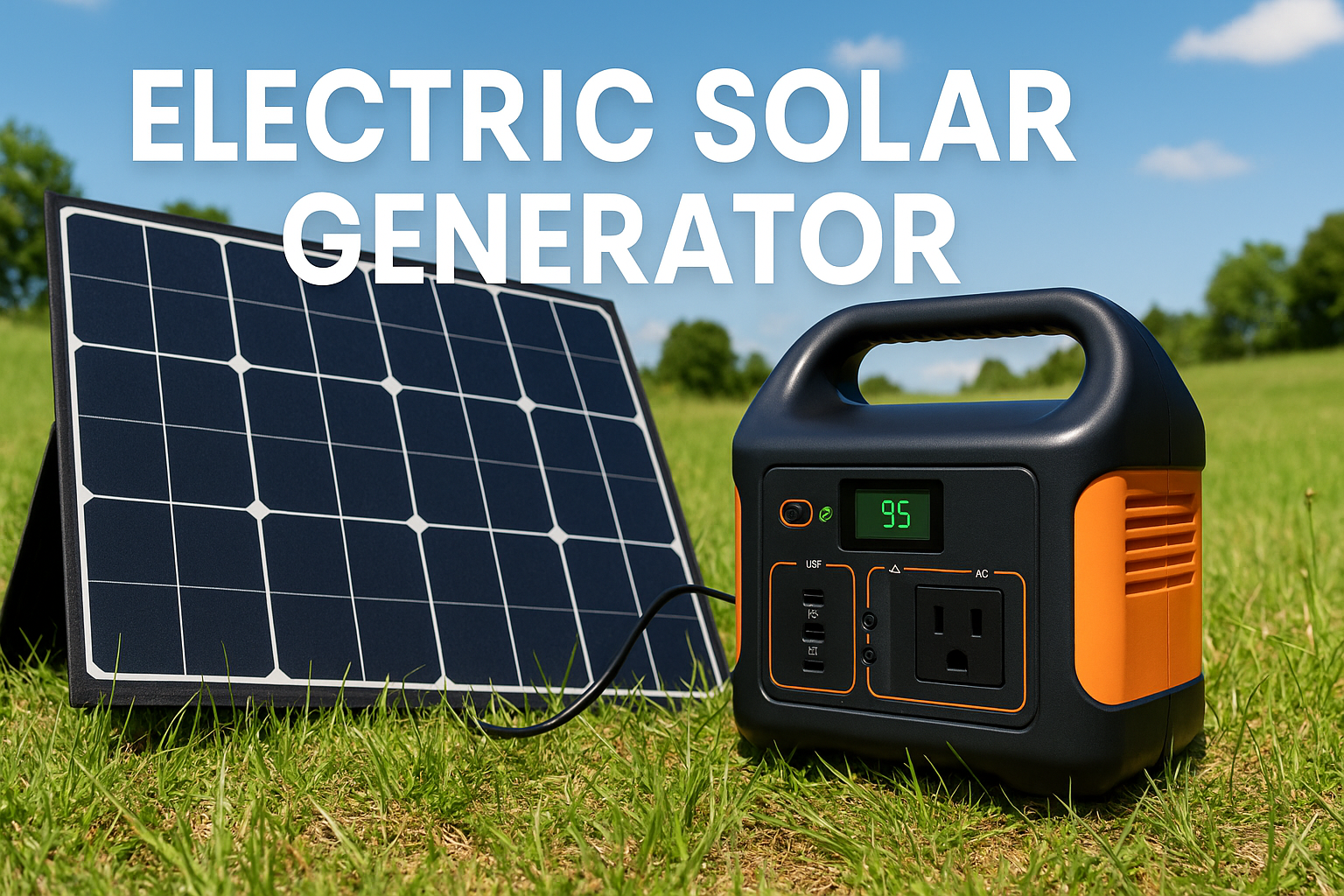As solar energy becomes a popular choice for homeowners and businesses, the type of battery used for storing that energy is a hot topic. You’ve probably heard about lithium-ion and lead-acid batteries, but what about Nickel-Cadmium (Ni-Cd) batteries? Are Ni-Cd batteries used in solar projects? Let’s break it down in simple terms, so you know whether they are the right fit for your solar setup.
✅ What Are Ni-Cd Batteries? (Quick Overview)
Before we dive into whether Ni-Cd batteries are used in solar systems, it’s essential to understand what these batteries are. Nickel-Cadmium (Ni-Cd) batteries are rechargeable batteries made from nickel oxide hydroxide and metallic cadmium. They’ve been around for decades and were once the go-to battery for many applications, including power tools, medical equipment, and emergency lighting.
Some key features of Ni-Cd batteries include:
- Long cycle life (They can be recharged thousands of times)
- High discharge rate (Great for high-drain devices)
- Performance in extreme temperatures (They can operate in very cold or hot environments)
- Resistance to overcharging and deep discharge
However, they also contain toxic cadmium, which requires careful disposal and recycling.
✅ Are Ni-Cd Batteries Used in Solar Projects?
The Short Answer: Yes, but rarely.
While Ni-Cd batteries can technically be used in solar energy storage, they are not commonly chosen for modern solar projects, especially residential and small commercial setups. Here’s why:
✅ Why Ni-Cd Batteries Are Sometimes Used in Solar
Though they’re not as popular as lithium-ion or lead-acid batteries, Ni-Cd batteries have some advantages that make them suitable for specific solar applications, particularly in harsh environments where other batteries might fail.
1. Extreme Temperature Performance
Ni-Cd batteries perform exceptionally well in extreme climates, including very cold and very hot conditions. Ni-Cd batteries can be a reliable choice for solar projects in remote areas, deserts, polar regions, or off-grid locations where temperatures fluctuate widely.
2. Long Lifespan and Durability
With a lifespan of 15-20 years and the ability to withstand deep discharges and overcharging, Ni-Cd batteries are low-maintenance. This makes them a fit for remote telecom stations, emergency solar backup systems, and industrial off-grid solar applications where battery maintenance is difficult.
3. High Cycle Life
Ni-Cd batteries offer more than 2000 charge/discharge cycles, making them suitable for long-term solar energy storage, especially when daily cycling is needed.
✅ Why Ni-Cd Batteries Are NOT Popular for Most Solar Projects
Despite these advantages, Ni-Cd batteries are NOT the first choice for most modern solar power systems due to several drawbacks:
1. Toxicity and Environmental Concerns
- Cadmium is highly toxic, and improper disposal can lead to environmental contamination.
- Regulations in many countries limit or ban cadmium use in consumer products, making Ni-Cd less accessible and less eco-friendly than lithium or lead-acid alternatives.
2. Lower Energy Density
- Ni-Cd batteries have lower energy density compared to lithium-ion batteries. This means they store less energy for the same size and weight, which is a disadvantage for space-constrained solar projects.
3. Memory Effect
- Ni-Cd batteries suffer from the “memory effect”, which reduces their capacity if they are not fully discharged before recharging — a problem in solar systems where full cycling isn’t always possible.
4. Higher Cost Compared to Lead-Acid
- Although cheaper than lithium, Ni-Cd batteries are often more expensive than lead-acid batteries, which offer better value for many solar users.
5. Difficult Recycling
- Recycling Ni-Cd batteries requires specialized facilities, making disposal costly and complicated.
✅ Which Solar Projects Still Use Ni-Cd Batteries?
Although rare in residential solar, Ni-Cd batteries still find use in:
- Remote industrial solar applications
- Telecommunication solar stations
- Off-grid solar systems in extreme climates
- Emergency solar backup systems in airports, hospitals, and military setups
In these cases, the durability and temperature resilience of Ni-Cd batteries can outweigh their disadvantages.
✅ Alternatives to Ni-Cd Batteries for Solar Projects
If you’re planning a solar project, you’ll probably want to consider these more popular alternatives:
1. Lithium-Ion Batteries
- High energy density (more storage in less space)
- Long lifespan (10-15 years)
- Low maintenance
- Common in residential and commercial solar storage
2. Lead-Acid Batteries (Flooded, AGM, Gel)
- Affordable upfront cost
- Reliable for small off-grid setups
- Shorter lifespan but good for budget-conscious users
3. Saltwater Batteries
- Eco-friendly and non-toxic
- Still emerging technology, but a good option for green-conscious solar users
✅ Pros and Cons of Ni-Cd Batteries in Solar Projects (Quick Table)
| Pros | Cons |
|---|---|
| Durable and long-lasting | Toxic (contains cadmium) |
| Performs well in extreme temperatures | Lower energy density than lithium |
| High cycle life (2000+ cycles) | Memory effect limits capacity |
| Tolerant to overcharging/discharging | More expensive than lead-acid alternatives |
| Low maintenance in remote locations | Difficult and costly recycling |
✅ Final Thoughts: Are Ni-Cd Batteries Worth It for Solar?
Ni-Cd batteries are NOT a mainstream choice for modern solar projects, especially when lithium-ion and lead-acid batteries offer better performance, safety, and eco-friendliness.
However, suppose you’re dealing with harsh environmental conditions or need a reliable, long-life battery for a remote off-grid solar system. In that case, Ni-Cd might still be worth considering — but be ready to handle the recycling and cost challenges.
✅ FAQs About Ni-Cd Batteries in Solar
1. Can I use Ni-Cd batteries for a home solar system?
Technically yes, but it’s not recommended due to better alternatives like lithium-ion or lead-acid that are more efficient, cost-effective, and eco-friendly.
2. Are Ni-Cd batteries better than lithium-ion for solar?
No. Lithium-ion batteries offer higher energy density, longer life, and safer technology, making them more suitable for solar.
3. How long do Ni-Cd batteries last in solar setups?
Ni-Cd batteries can last up to 20 years with proper maintenance, but their performance may decline over time.
4. Are Ni-Cd batteries banned?
In many countries, cadmium use is heavily restricted, but Ni-Cd batteries are still allowed in industrial and emergency applications.
✅ Conclusion
So, are Ni-Cd batteries used in solar projects? Yes, but only in specific, industrial, or extreme cases. For most homeowners and business owners, lithium-ion or lead-acid batteries are a much better choice for solar energy storage.
If you’re thinking about setting up a solar battery bank, focus on options that are efficient, safe, eco-friendly, and easy to maintain — and most of the time, that means leaving Ni-Cd batteries off your list.




